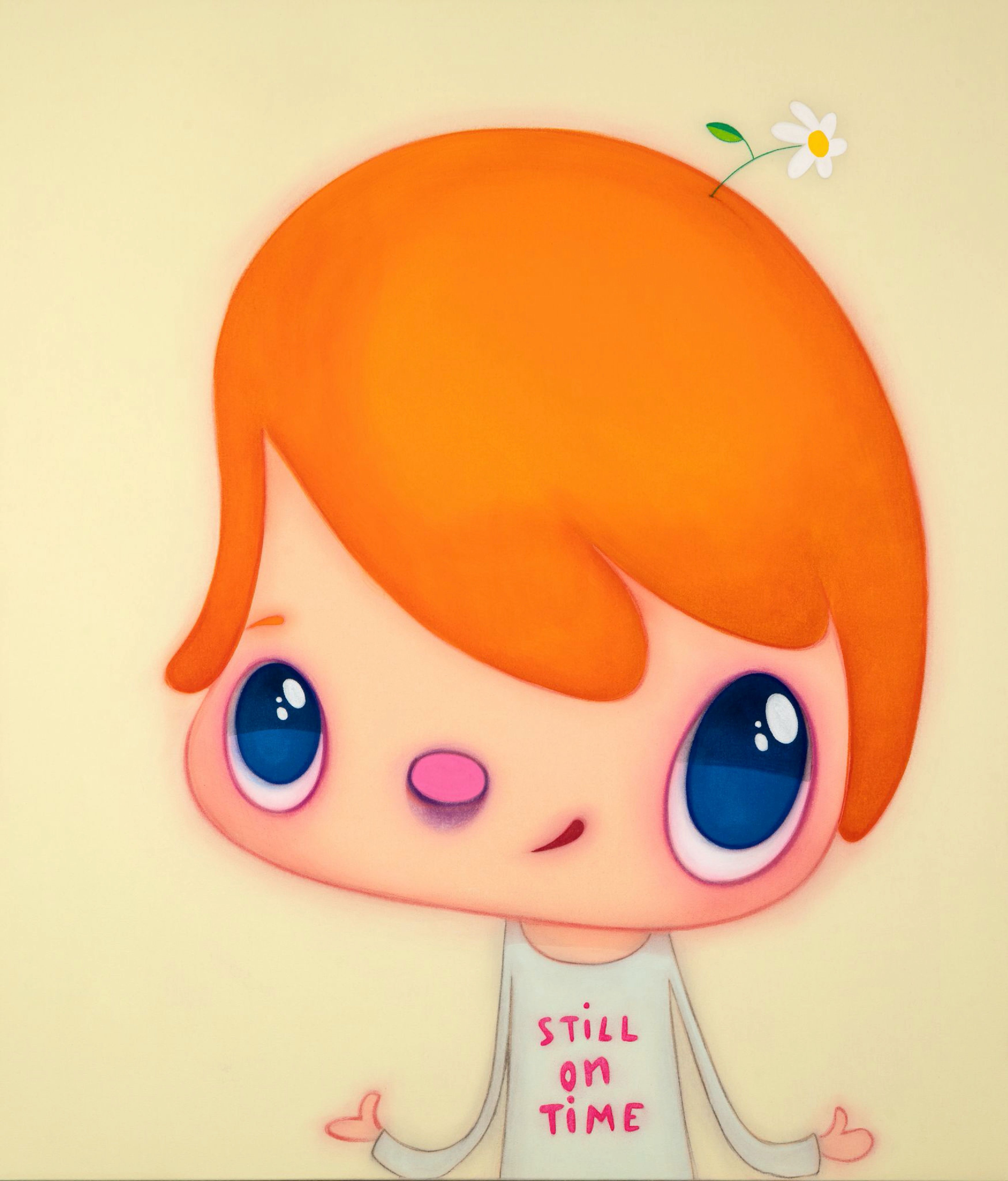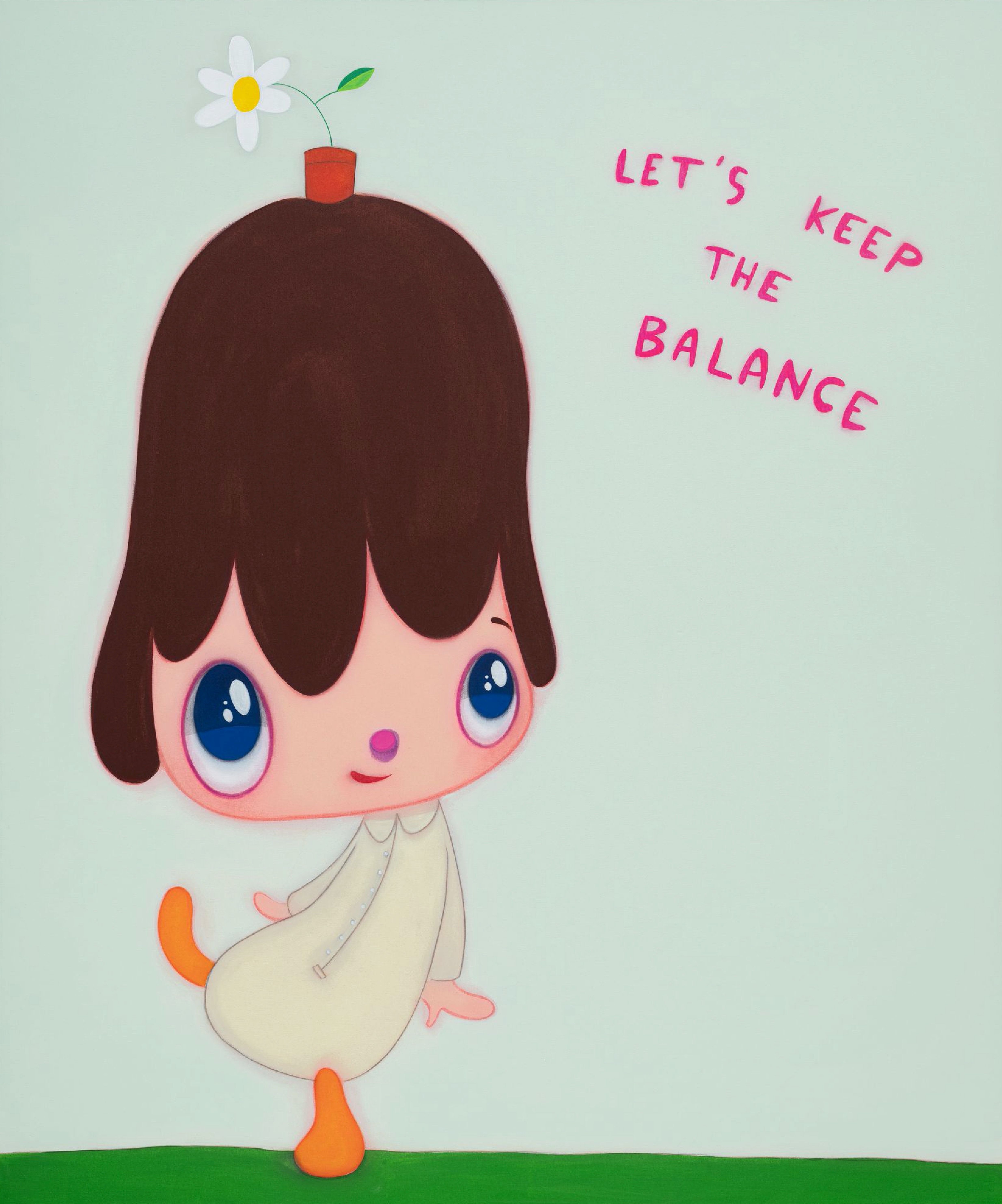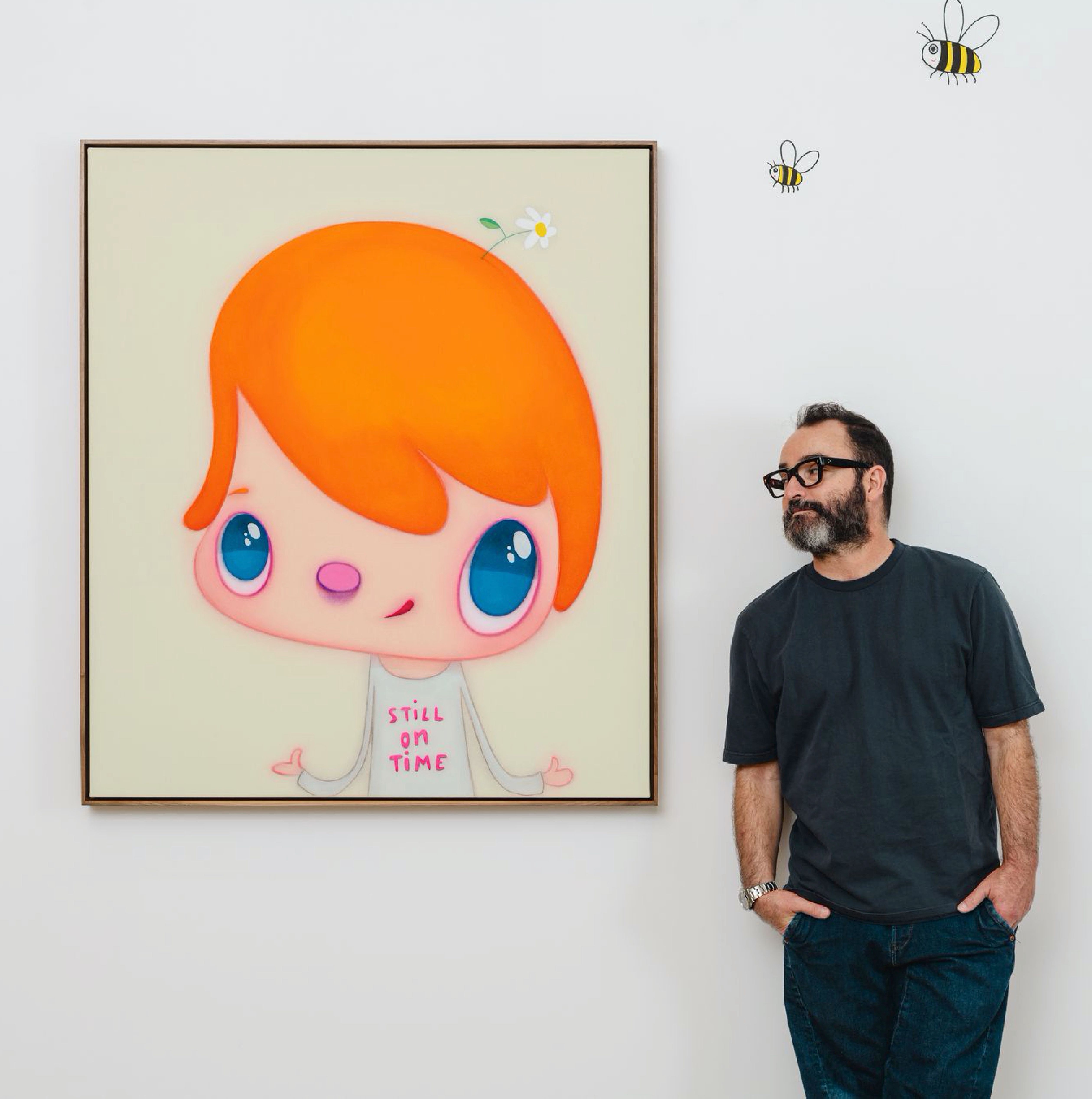
In an era where so much artistic output deals in dystopian cynicism, the acclaimed work of Spanish artist Javier Calleja projects hopeful optimism, while simultaneously presenting a wry and ironic sense of humour acutely attuned to the zeitgeist. His latest show Still on Time, exhibiting at Almine Rech until the end of this month, features twenty new paintings of his trademark wide-eyed children, all of whom seem to be knowingly poking fun at the farcical seriousness that underpins not only the art world, but our contemporary culture at large. Accompanied by phrases such as “Lets Get Crazy”, “What To Do Now?”, “Keep The Balance” and “This Is Your Lucky Day” the pithy progeny of his imagination can’t help but raise a smile. Masterfully painted on huge canvases, and considerably less credulous than they may at first appear to be, these mischievous characters, who have been companions of the painter for some twenty-plus years, engage the viewer in a game of self-reflection – confronting the everyday hurdles of life with a playful rebelliousness that is both uplifting and brimming with satire. Here, the artist talks to Culture Collective about the minimalism at the heart of his practice, his love of magic, and tells us why the most important lesson we all need to learn in life is that you can’t always get what you want.
How would you describe yourself as a painter?
I feel that I am a very classic kind of painter. I am not a cartoonist, although I do know that because we live in the age of social media, people often don't see the work directly, and only see the characters, not the actual painting. When people do see my paintings in person, though, they see the depth and technique, and that some elements of my paintings are actually very realistic – such as the eyes, which are very simple, but also kind of almost hyper-realistic. This effect plays a little trick on the brain, because one side of your brain says, well, okay, I can see something real, but, at the same time, on the other side, your brain also says, come on, it's a cartoon, and a cartoon is not real. To me, this is a kind of magic, because your eyes believe they see something, but at the same time your brain says, no, this is not possible – and that for me is really the magic of art. I was always obsessed with drawing as a child. I loved Mickey Mouse, for example, because I was drawn to the very minimalistic secret structure at work – he is really just a series of circles. In Disney the soft, or sweet characters, always had this simple structure, actually, while anything scary, or bad, was much more complicated. I loved that. My own painting is a kind of minimalistic exercise.

What would you say is different about your new paintings, and what kind of experience are you seeking to communicate to your viewer in general?
I am introducing many more objects into my new paintings, because I always want to do better, and I feel if I can add more details then maybe I can do something new without losing my classical composition. The most important thing in them is still the look, though – because my paintings are always looking directly at you – and the feeling I am still looking for is this kind of magic. I don't ever want people to walk into the gallery and feel intimidated, or stupid when they leave, because they have been made to feel that that they don't understand, or can’t read the work. An art gallery shouldn’t be about somebody telling you that you are not intelligent. It should be a place that is relaxed, where a child can bring their mother, and where maybe that child will come to love conceptual art in the future. I am not asking the viewer to read anything into the paintings, only to come into the space of the painting. I like that people who don't know anything about art can enjoy the work, and that intellectual art people can also see that there is a good painting behind the character.

Are you somebody who is nostalgic for the innocence of childhood? What stage of childhood would you say your work is focused upon?
Is there something nostalgic in my painting? Yeah. Maybe. I try to paint this moment in childhood where people cannot really say if the child is a boy or a girl – this moment at maybe about six years old when we are all really still the same, and the only difference is really that maybe your mum cut your hair like a boy, or your father decided that you would wear blue for a boy or pink for a girl, or something like that. It’s this moment before you are kind of made separate. The children in my paintings are all at this age and this moment where, apart from the difference in style, they are the same, and, in that sense, they are kind of nostalgic. There is a kind of nostalgia in the eyes also, because it almost looks like they are crying sometimes, and that is kind of there to remind you of your emotions when you were a child – that kind of feeling, for example, when you are tired and you want to cry, or you don't now why you might want to cry or laugh. This is kind of the point – maybe the child has stopped crying and is smiling and happy again, but the eyes are still wet. It’s this moment where children learn from their parents that every time they stop crying, they are a kind of small hero – and when you start to learn in life that you can’t always get what you want, or that you can’t always win, but that failure is not a disaster. That is really the biggest lesson for a child.

In terms of your process do you begin with the character, or does the phraseology come to you first?
I always start with the character. I start with the drawing, and then, at the end, I will add the sentence. It is always the last thing that I do. It’s almost as though when the painting of the character is finished, I say, okay, I will talk with him or with her, and I will say, what do you want? Then I find that they want to tell you something. For example, when I did the painting Never Too Late To Talk, I was thinking about Brexit, and I felt that the character was saying she needed this little white flag to say, peace, can we talk? Brexit is very stupid, because we are all European brothers and sisters. I do often repeat characters in my work, but there are some new characters in this show. Let’s Get Crazy is one, who has a little volcano in his head, and there I’m talking about mental safety, and how everybody has to take care of their mental health, which is what we all found in the pandemic – that we all have to look for the signs, and take care of each other. And, you know, if people tell you that you are crazy, it's like a weight, or a big stone you have to carry on your back. I think it was Shakespeare who said that everybody has a monster inside, and that you have to let the monster go out sometimes, because if you keep it inside, it can grow, and destroy you – we all need to get crazy sometimes, before the madness gets you.
Still On Time exhibits at Almine Rech until July 29. All images courtesy of Almine Rech and the artist